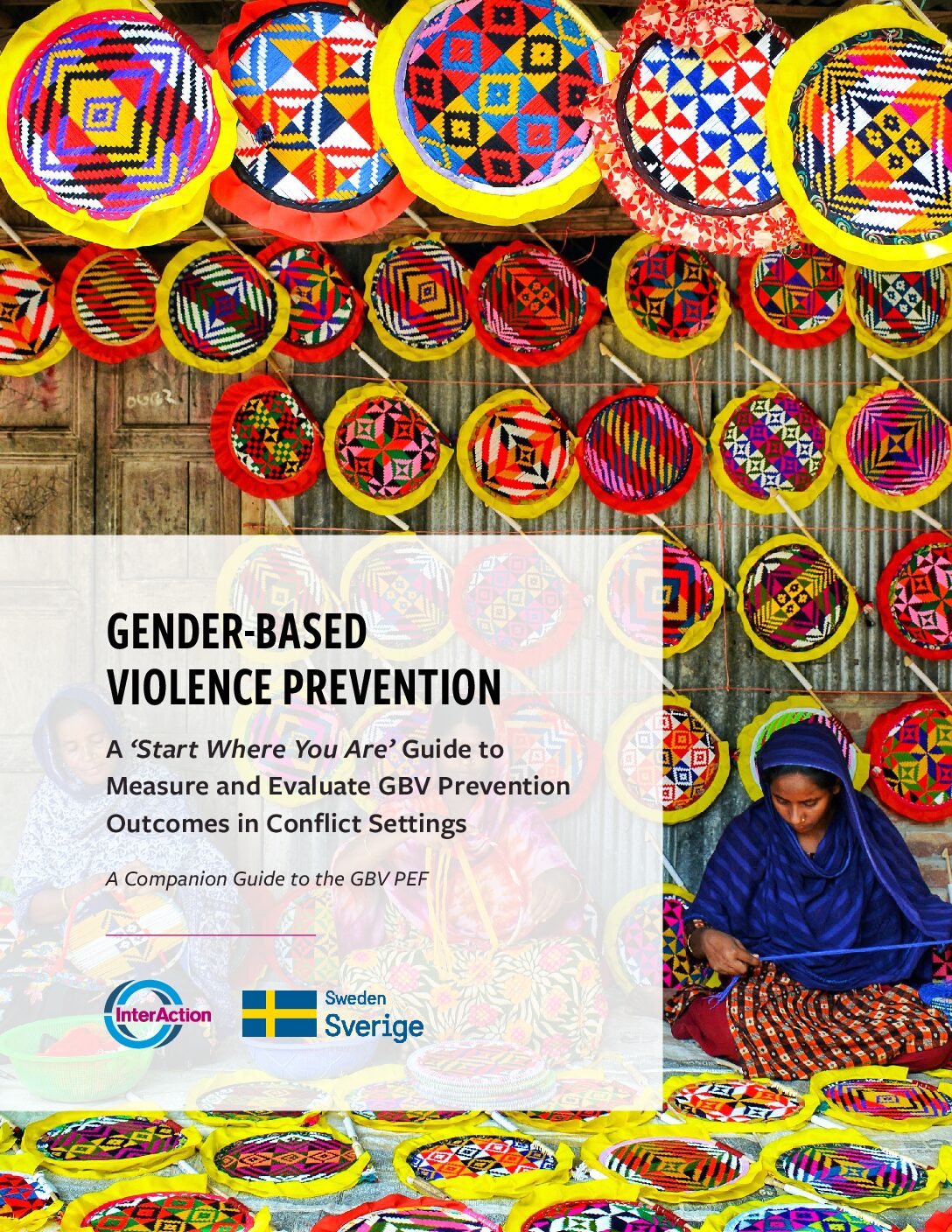Breaking Barriers: Introducing the Gender-Based Violence ‘Start Where You Are’ Companion Guide
We are excited to introduce the Gender-Based Violence ‘Start Where You Are’ Companion Guide, a tool that will assist organizations in utilizing the Gender-Based Violence Prevention Evaluation Framework (GBV-PEF) through meeting GBV teams where they are in their prevention programming. This guide is informed by consultations from organizations who have piloted the GBV-PEF, including the GBV-PEF Community of Practice, InterAction member organizations, and beyond. It is available in Arabic, French, Spanish, and English.
The companion guide identifies four key barrier areas reported by InterAction’s members when utilizing the GBV-PEF’s tools: risk analysis, project design, innovation in monitoring systems, and evaluation tools. It offers a self-assessment tool to help organizations identify existing strengths and limitations, enabling strategic prioritization of barriers to address initially within a 12-month period. Additionally, a ‘Where to Begin’ assessment helps organizations identify specific options for action within these barrier areas.
The barrier to risk analysis often stems from time constraints in emergency response settings and donor requirements. The guide suggests avenues to gather context-specific community feedback and data by leveraging connections with local partner organizations, frontline staff, humanitarian clusters, and pre-existing data pools. It also advocates for the use of the protection risk equation to conduct in-depth risk analysis considering threats, vulnerabilities, and community capacities.
During the development of the Companion Guide, consulted organizations have expressed reluctance to develop specific theories of change for each program at the field level due to concerns about hindering broader learning, uncertainties regarding effective GBV prevention strategies, and resource constraints. Strategies offered include contextualizing theories of change, identifying information gaps, and scrutinizing causal assumptions to enhance adaptability and effectiveness.
The Companion Guide also addresses challenges in meeting pre-existing monitoring requirements in GBV prevention programs. While standardized indicators aid reporting, they may overlook crucial community-level changes. Options include advocating for indicator refinement and dividing monitoring tasks between program and monitoring teams. Furthermore, the guide highlights resource challenges in implementing monitoring and evaluation tools for GBV prevention. Resource-intensive tools like process-tracing and outcome harvesting can be optimized by embedding evaluation work into existing activities or combining approaches.
The ‘Start Where You Are’ Guide provides practical options to overcome proven barriers to outcome oriented GBV programming. We are excited to share this resource with the GBV humanitarian community with trust that it will serve as a practical resource for GBV teams striving to achieve sustainable GBV prevention outcomes through participatory and transformative methodologies.
